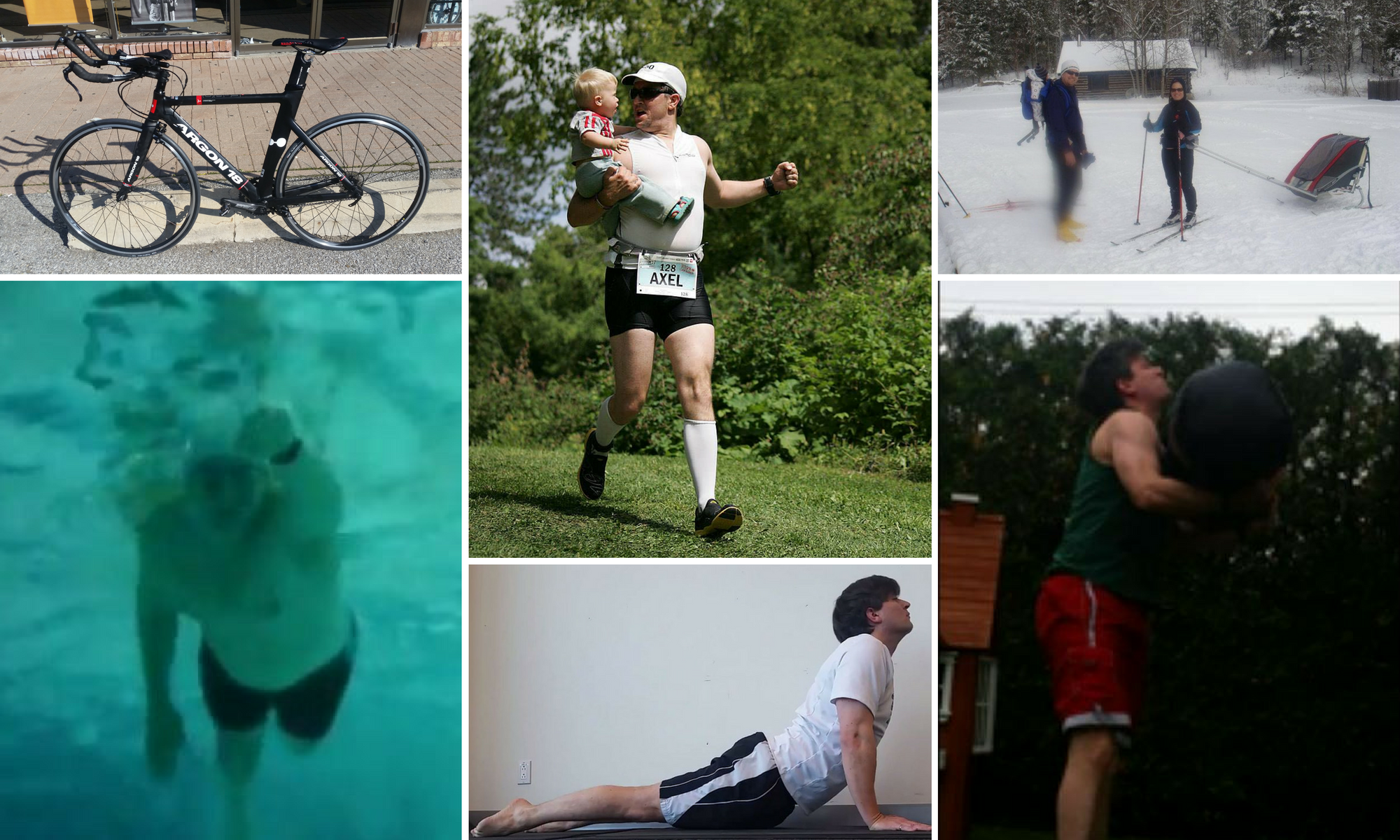I feel bad for neglecting swim training sometimes since I really honestly enjoy being in the water. Just about everyone under-emphasizes their swim since it’s the discipline that least impacts race time. In my case this is compounded, since I do better on the swim compared to my age group – I should be trying to get my bike and run times up to the middle of the pack like my swim often is. Still, ‘use it or lose it’ so I went back in the pool for the first time in a long while last week.
I’ve found trying to learn better swim technique to be very frustrating. Joining a Master’s Swim Club is not for me as making it to classes for a set time often doesn’t work for me, and I don’t really like the expense of it either. When I try to learn on my own through reading and research, I come across articles like this one from Triathlon Magazine Canada. It’s an example where the total mileage of a swim workout far exceeds what I would do in a race, and some of the technical stuff confuses (note my question at the bottom of the article that has gone unanswered as of this writing), to say nothing of how impractical the idea of using a parachute would be while sharing the lanes with other swimmers.
Here’s an example of a description of how to do a kicking drill:
- With your hips rotated to the side, and your shoulders parallel, keep your head still and continue looking at the bottom of the pool.
- Extend one arm out in front.
- When you need air, rotate all the way onto
your back, take a few good breaths, and repeat.
- Warm-up. I usually do 10 25m lengths just to get my pace and breathing down, warm up my muscles and generally ‘get in the groove’.
- Have a main body of the workout that is broken into ‘sets’. I usually do sets of 100m with approximately 1 minute rests.
- Use paddles and a pull-buoy (see photo). The gloves put more load on my arms so I figure I’m strengthening, and putting the buoy between my legs lets me focus on my stroke a little more. I try to hold the buoy somewhere between my knees and ankles which forces me to engage my core more. Sometimes I use them both at the same time.
 |
| My paddle gloves and pull-buoy. |
- Do sets at different speeds; though usually I don’t have room in the workout to do both technical work with the equipment and speed/tempo work.
- Count my strokes per length. This one I do rarely and I’ve never been able to track much improvement. I average 25-26 strokes per 25m, and at least one source I’ve seen says I should be getting in less than 18 strokes per 25 yards otherwise I’m categorized a ‘Practice Swimmer’, i.e. a beginner.
Of course, the other part of reality that makes implementing drills so hard is the fact that at public pools, there is basically no such thing as Lane Etiquette, in spite of a sign explaining it at the entrance to the pool.
My favourite is people doing kick drills (without fins, mind you) in the ‘Fast’ lane; not even Michael Phelps would be fast if he was merely kicking with a flutter board.
Still I don’t give up that easily, and I’m hoping to implement a few technical drills and improve my stroke so that this post will have a part 2, where I report a better swimming experience.



























